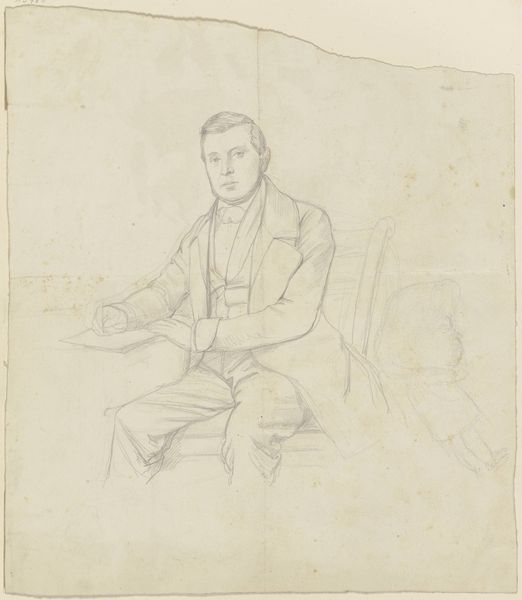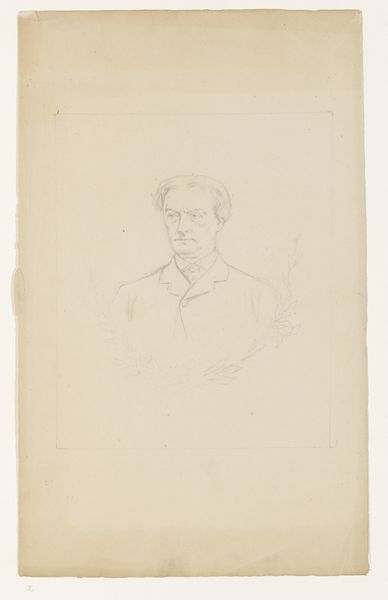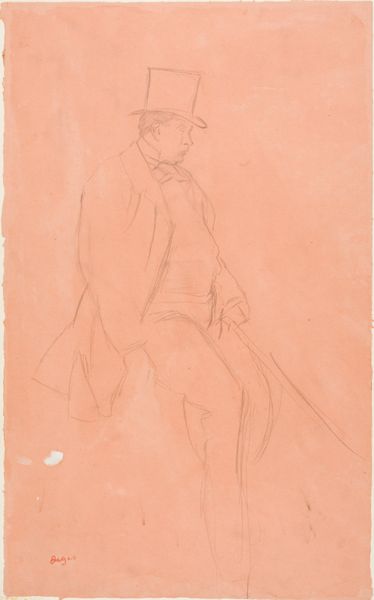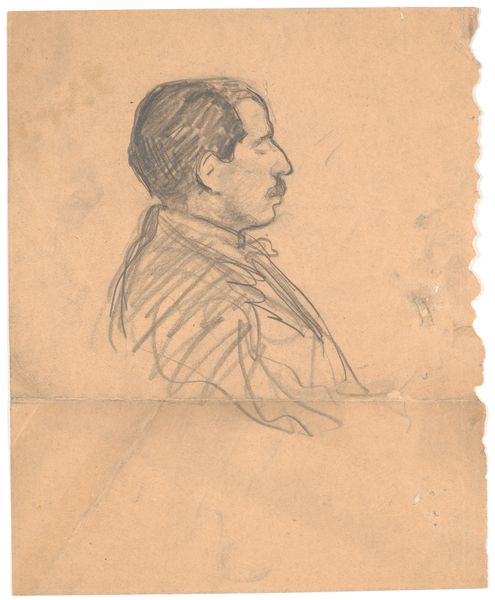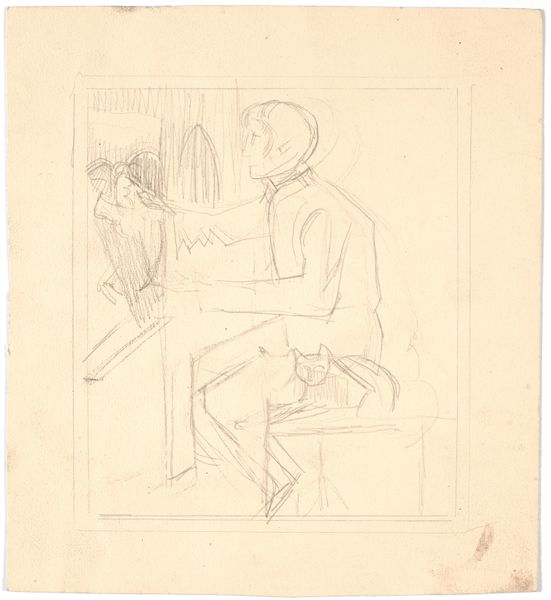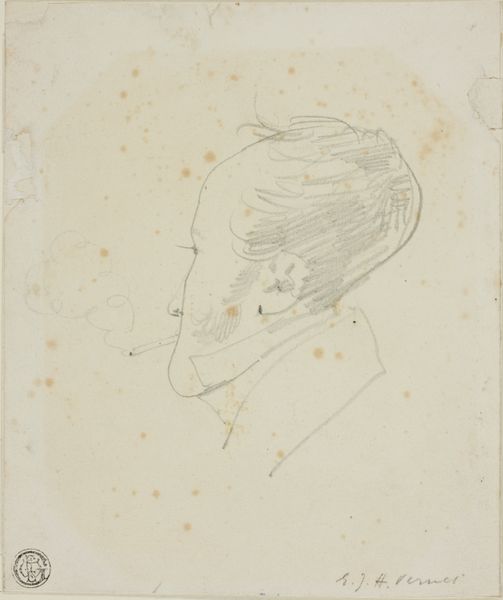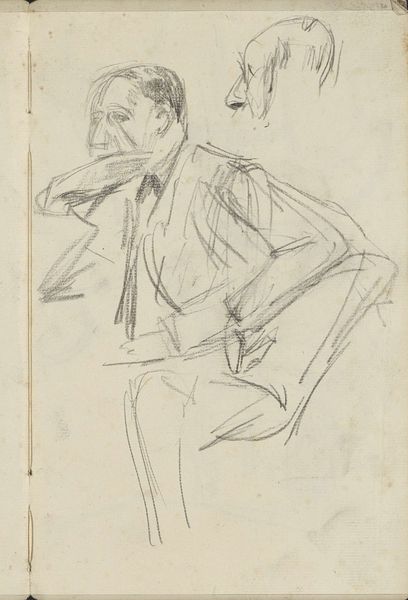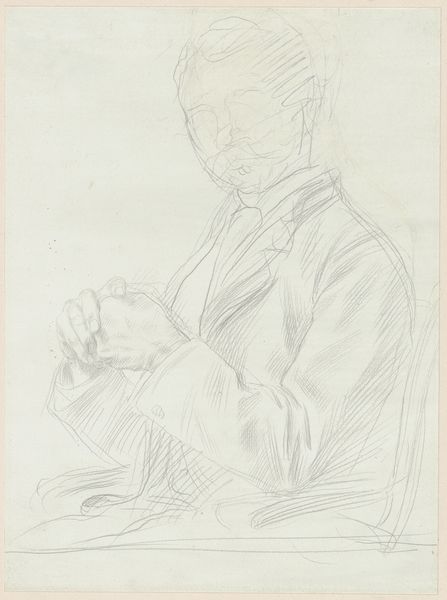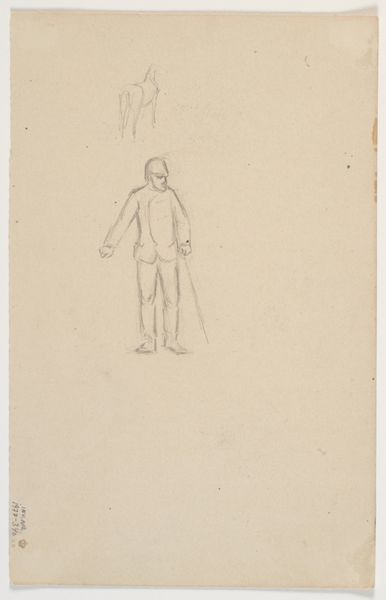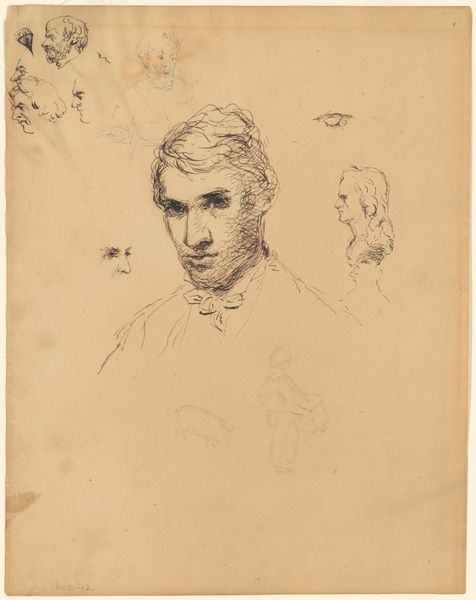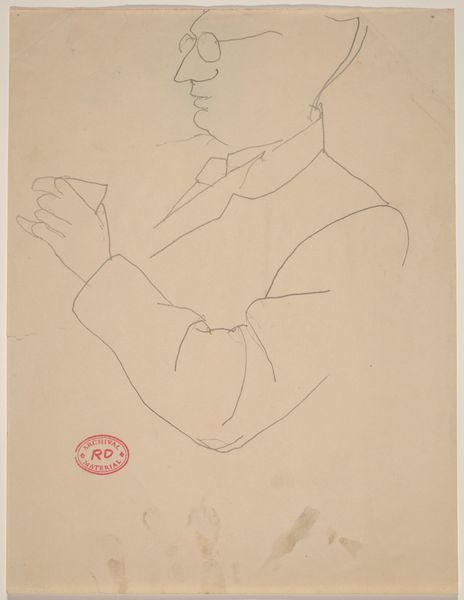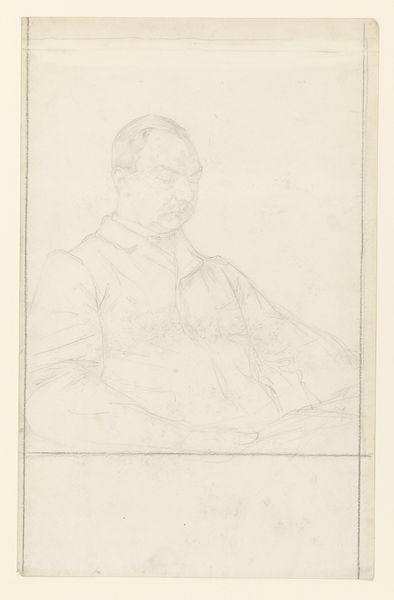
drawing, paper, pencil, graphite
#
portrait
#
pencil drawn
#
drawing
#
toned paper
#
light pencil work
#
16_19th-century
#
pencil sketch
#
paper
#
personal sketchbook
#
german
#
idea generation sketch
#
ink drawing experimentation
#
pencil
#
graphite
#
sketchbook drawing
#
pencil work
#
academic-art
#
sketchbook art
Copyright: Public Domain
Curator: This intriguing sketch is titled "Bildnis des Komponisten Christian Gottlieb Wolff," currently held at the Städel Museum. I’m immediately drawn to the delicacy of the lines. What are your initial thoughts? Editor: My eye goes right to the quality of the drawing. It looks like it was swiftly done. I'm interested in the use of pencil, its specific grade, and the type of paper used for this initial portrait. You also notice, above the primary subject's head are additional shapes, the first, of a face and the other what seems like a partial human skull, and how those preliminary explorations of form might tell us something. Curator: Absolutely. We can explore the nuances of artistry here. Viewing it within its likely historical moment, it points toward discussions around artistic freedom in portraiture, who has the power to commission and how identity of the sitter relates to this power balance. Consider that Wolff, a composer, would have been connected to cultural and intellectual circles. What’s your take? Editor: Indeed. Looking closer, you can see different pencil weights have been implemented. It looks as though there's a bit of shading along the face, perhaps to give some perspective. And what seems at first a relatively loose rendering seems more involved and controlled on further investigation, no? Curator: That's astute. Considering materials, what about the social context? This connects directly to the economic structures of art creation, production of the paper and pencil, class assumptions... How did such practices legitimize themselves during that era? Editor: You know, from a purely material and practical standpoint, it's remarkable to see how graphite and paper could so effectively capture likeness and perhaps something beyond, what appears as personality. There is no question of talent in representing such things and capturing the likeness. It begs the question of material means necessary for artistic process to converge with a specific creative will and output? Curator: That intersectionality is key—materials, power, access. In our own moment, examining whose faces get represented, by whom, and for what purpose...It helps open these questions to current art, and cultural, making practices and challenges entrenched hegemonies. Editor: Right, it invites us to deconstruct and reconsider the methods used by earlier traditions through a more aware understanding and appreciation of their components and impact. Thank you for these rich details to examine this sketch more fully. Curator: And thank you. Placing "Bildnis des Komponisten Christian Gottlieb Wolff" within the social and historical landscape reveals its complexities and potential.
Comments
No comments
Be the first to comment and join the conversation on the ultimate creative platform.
